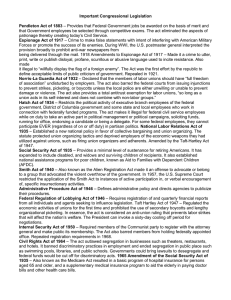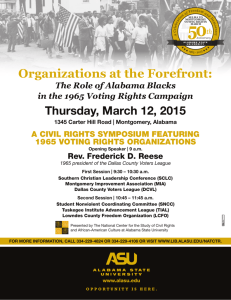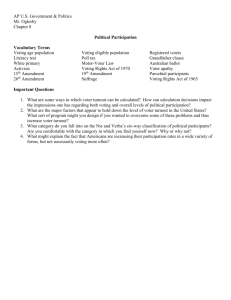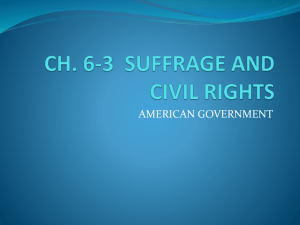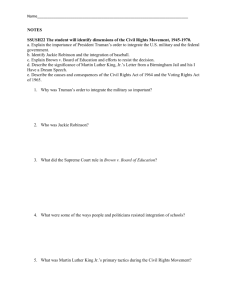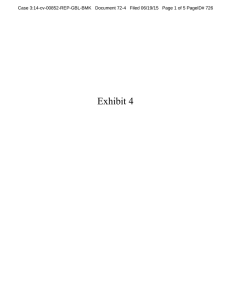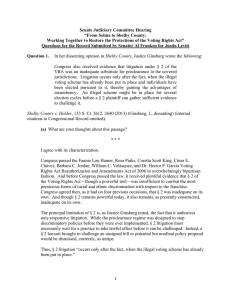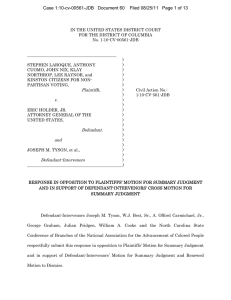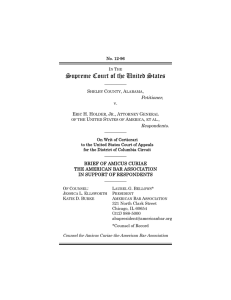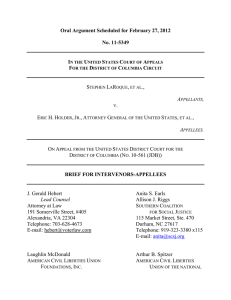R! 7.5 Analyze the Structure an Author Uses to
advertisement
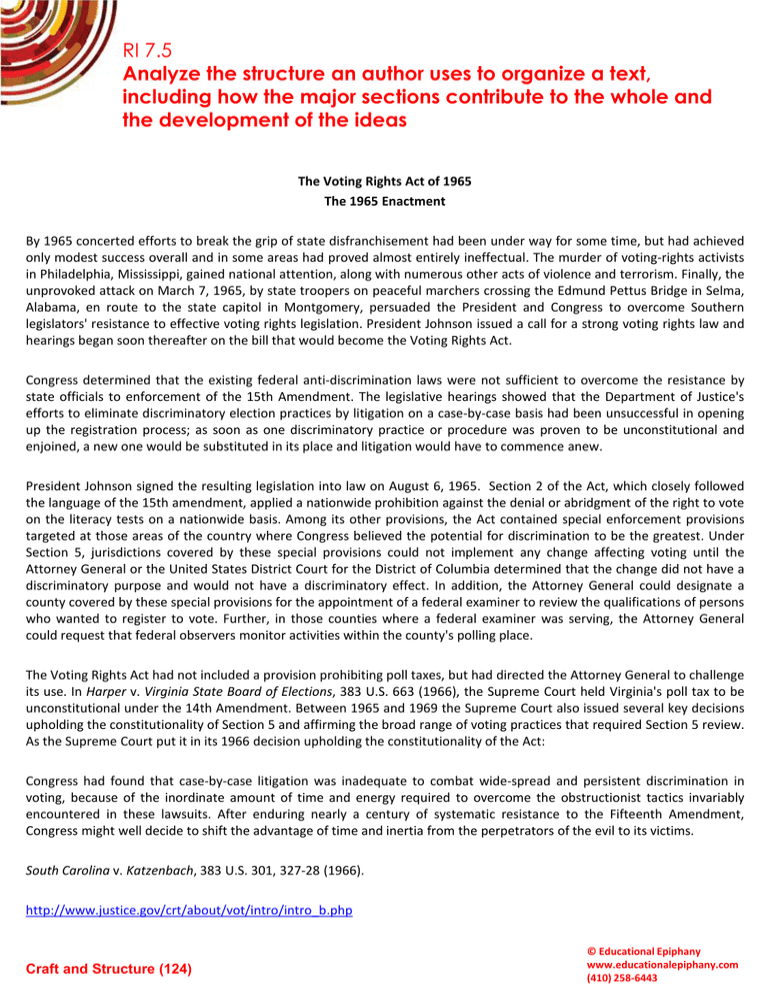
RI 7.5 Analyze the structure an author uses to organize a text, including how the major sections contribute to the whole and the development of the ideas The Voting Rights Act of 1965 The 1965 Enactment By 1965 concerted efforts to break the grip of state disfranchisement had been under way for some time, but had achieved only modest success overall and in some areas had proved almost entirely ineffectual. The murder of voting-rights activists in Philadelphia, Mississippi, gained national attention, along with numerous other acts of violence and terrorism. Finally, the unprovoked attack on March 7, 1965, by state troopers on peaceful marchers crossing the Edmund Pettus Bridge in Selma, Alabama, en route to the state capitol in Montgomery, persuaded the President and Congress to overcome Southern legislators' resistance to effective voting rights legislation. President Johnson issued a call for a strong voting rights law and hearings began soon thereafter on the bill that would become the Voting Rights Act. Congress determined that the existing federal anti-discrimination laws were not sufficient to overcome the resistance by state officials to enforcement of the 15th Amendment. The legislative hearings showed that the Department of Justice's efforts to eliminate discriminatory election practices by litigation on a case-by-case basis had been unsuccessful in opening up the registration process; as soon as one discriminatory practice or procedure was proven to be unconstitutional and enjoined, a new one would be substituted in its place and litigation would have to commence anew. President Johnson signed the resulting legislation into law on August 6, 1965. Section 2 of the Act, which closely followed the language of the 15th amendment, applied a nationwide prohibition against the denial or abridgment of the right to vote on the literacy tests on a nationwide basis. Among its other provisions, the Act contained special enforcement provisions targeted at those areas of the country where Congress believed the potential for discrimination to be the greatest. Under Section 5, jurisdictions covered by these special provisions could not implement any change affecting voting until the Attorney General or the United States District Court for the District of Columbia determined that the change did not have a discriminatory purpose and would not have a discriminatory effect. In addition, the Attorney General could designate a county covered by these special provisions for the appointment of a federal examiner to review the qualifications of persons who wanted to register to vote. Further, in those counties where a federal examiner was serving, the Attorney General could request that federal observers monitor activities within the county's polling place. The Voting Rights Act had not included a provision prohibiting poll taxes, but had directed the Attorney General to challenge its use. In Harper v. Virginia State Board of Elections, 383 U.S. 663 (1966), the Supreme Court held Virginia's poll tax to be unconstitutional under the 14th Amendment. Between 1965 and 1969 the Supreme Court also issued several key decisions upholding the constitutionality of Section 5 and affirming the broad range of voting practices that required Section 5 review. As the Supreme Court put it in its 1966 decision upholding the constitutionality of the Act: Congress had found that case-by-case litigation was inadequate to combat wide-spread and persistent discrimination in voting, because of the inordinate amount of time and energy required to overcome the obstructionist tactics invariably encountered in these lawsuits. After enduring nearly a century of systematic resistance to the Fifteenth Amendment, Congress might well decide to shift the advantage of time and inertia from the perpetrators of the evil to its victims. South Carolina v. Katzenbach, 383 U.S. 301, 327-28 (1966). http://www.justice.gov/crt/about/vot/intro/intro_b.php Craft and Structure (124) © Educational Epiphany www.educationalepiphany.com (410) 258-6443
